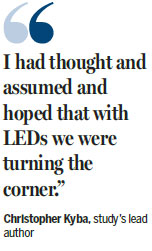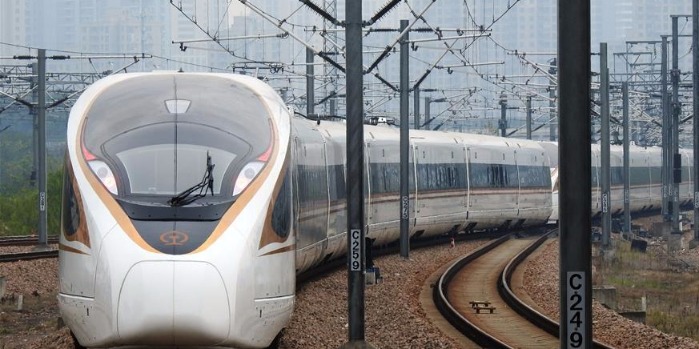Light pollution rise casts dark shadow
Findings shatter long-held notions about use of energy-efficient LEDs
CAPE CANAVERAL, Florida - The world's nights are getting alarmingly brighter, which is bad news for all sorts of creatures, humans included.
A German-led team reported on Wednesday that light pollution is threatening darkness almost everywhere.
Satellite observations during five Octobers show Earth's artificially lit outdoor area grew by 2 percent a year from 2012 to 2016. So did nighttime brightness.

Light pollution is actually worse than that, according to the researchers. Their measurements coincide with the outdoor switch to energy-efficient and cost-saving light-emitting diodes, or LEDs. Because the imaging sensor on the polar-orbiting weather satellite can't detect the LED-generated color blue, some light is missed.
The observations, for example, indicate stable levels of night light in the United States, Netherlands, Spain and Italy. But light pollution is almost certainly on the rise in those countries given this elusive blue light, said Christopher Kyba of the GFZ German Research Center for Geosciences and lead author of the study published in Science Advances.
Also on the rise is the spread of light into the hinterlands and overall increased use. The findings shatter the long-held notion that more energy-efficient lighting would decrease usage on the global or at least a national scale.
"Honestly, I had thought and assumed and hoped that with LEDs we were turning the corner. There's also a lot more awareness of light pollution," he said. "It is quite disappointing."
The biological impact from surging artificial light is also significant, according to the researchers.
People's sleep can be marred, which in turn can affect their health. The migration and reproduction of birds, fish, amphibians, insects and bats can be disrupted. Plants can have abnormally extended growing periods. And forget about seeing stars or the Milky Way, if the trend continues.
About the only places with dramatic declines in night light were in areas of conflict like Syria and Yemen, the researchers found. Australia also reported a noticeable drop, but that's because wildfires were raging early in the study. Researchers were unable to filter out the bright burning light.
Surge in night lighting
Asia, Africa and South America, for the most part, saw a surge in artificial night lighting.
More and more places are installing outdoor lighting given its low cost and the overall growth in communities' wealth, the scientists noted. Urban sprawl is also moving towns farther out. The outskirts of major cities in developing nations are brightening quite rapidly, in fact, Kyba said.
Photos taken by astronauts aboard the International Space Station also illuminate the growing problem.
Kyba and his colleagues recommend avoiding glaring lamps whenever possible, choosing amber over so-called white LEDs and using more efficient ways to illuminate places like parking lots or city streets. For example, dim, closely spaced lights tend to provide better visibility than bright lights that are more spread out.
Associated Press
(China Daily 11/24/2017 page10)
















